Recent Articles
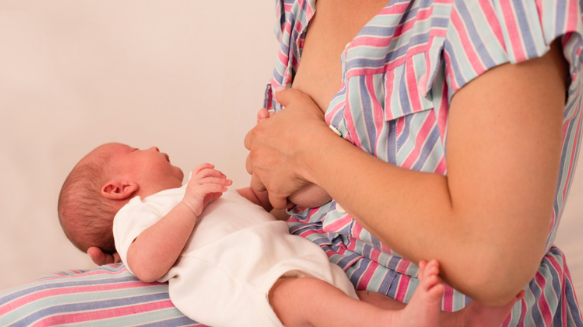
Engorgement and Why it Happens
This is probably a term you have heard before, but what does engorgement really mean? Engorgement is defined as breast pain, firmness, and swelling that is usually uncomfortable. While it can happen at any time throughout a lactation journey, it most commonly occurs with the onset of mature milk production or if the breasts go too long without emptying.

Dysphoric Milk Ejection Reflex (D-MER)
D-MER is associated with brief feelings of intense dread, sadness, depression, hopelessness, and anxiety that occurs only during the letdown phase (the initial 30-90 seconds of milk ejection) and quickly resolve. Unlike postpartum depression, these feelings are fleeting and do not persist throughout the duration of the breastfeeding session or between feedings.

Breastfeeding Positions
Breastfeeding a newborn is very different to breastfeeding a six-month-old or even a 3-month-old baby. Learn which positions are best for breastfeeding your newborn, what a good latch feels like, different techniques for achieving a deeper latch, and how to know when your baby is full.

The Benefits of Breastfeeding for Moms
While the benefits of breast milk for babies are becoming well-known around the world (they do call it liquid gold for a reason), there are also many amazing advantages for moms themselves! All the good antibodies and enzymes in breast milk help protect babies from a wide variety of illnesses and diseases, but the act of breastfeeding itself also reduces the risk of severe disorders for mothers, including some cancers!

Nipple and Breast Pain from Vasospasm
Vasospasm occurs when blood vessels contract abnormally, resulting in impaired blood circulation, which can be quite painful. It often presents with color changes of the nipple, such as blanching (turning white) or purple, along with sharp, shooting pain in the nipple, breast, or sometimes both. It is often caused by an incorrect latch cutting off circulation to the nipple but can also result from pre-existing disorders.

Cesarean Birth and Breastfeeding
Whether it be a planned or emergency c-section, it’s normal that the anticipation of surgery can cause fear or worry. I often have moms ask if their delivery method will affect the baby’s breastfeeding ability. While there can be a few added hurdles to breastfeeding when a baby is born by c-section, these are usually short-lived, and most babies go on to breastfeed without any issue.

Can I Diet While Breastfeeding?
While breastfeeding can help you lose weight due to the calorie demand required to make milk, some moms wonder if it's safe to diet while nursing. As a lactation consultant, I recommend that my clients try to intake extra calories while breastfeeding; however, there are some instances where moms can diet safely without affecting breast milk quantity or quality.
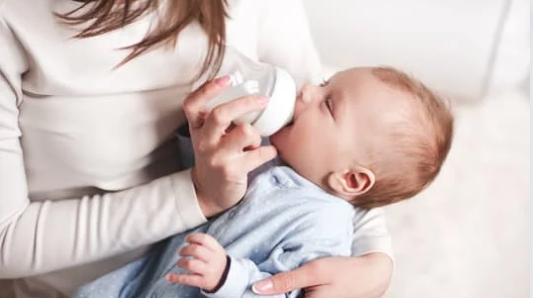
Switching from Breastfeeding to Formula Feeding
When doing their research and considering how they would like to feed their newborn, most parents set out with the goal of providing breast milk to their baby. In fact, 83% of babies are breastfed at some point- but that number drops to just 25% being exclusively breastfed at six months of age. Many mothers then have to switch their babies to formula. Read on to learn how to make the transition.

Do Mothers Lose Weight Faster With Breastfeeding?
Of all the benefits breastfeeding brings to babies and their mothers, the potential to lose the extra weight pregnancy brings may be on the top of the list for many! But does breastfeeding help you lose weight faster in the postpartum period? Various studies show that mothers who exclusively breastfeed their infants return to pre-pregnancy weight more quickly than those who don't.

The Relationship between Breastfeeding and Speech Development
The World Health Organization stresses its importance not just for the early months but recommends breastfeeding up until 12 months because the benefits of breastmilk continue long past infancy, and several studies have shown that breastfeeding enhances speech development and clarity.
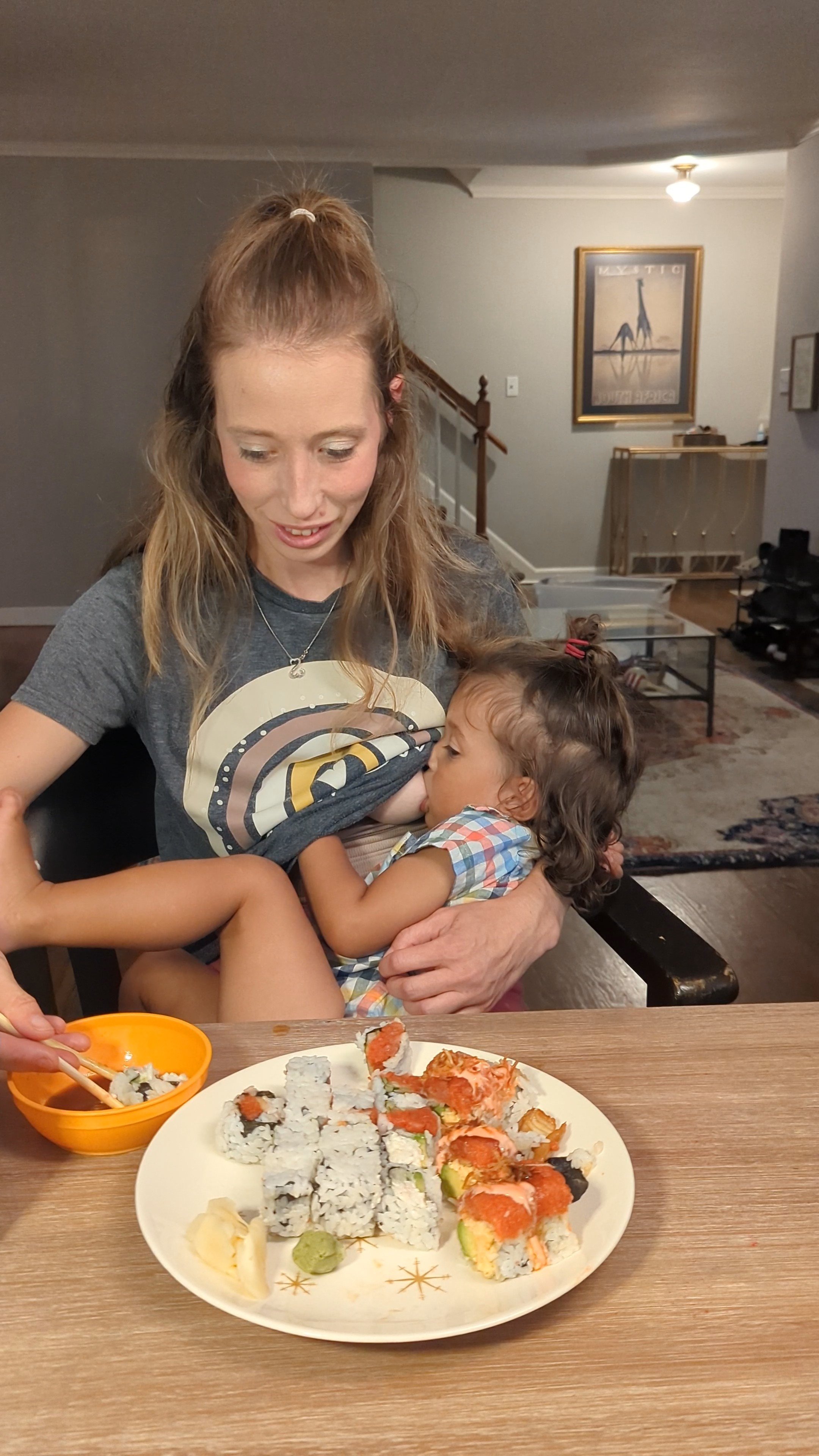
Is It Safe to Breastfeed and Eat Sushi?
One of the first things I was advised to give up immediately was sushi. An avid sushi fan (I would literally eat sushi 4 times a week), it was one of the hardest things I ever had to do. What made it even worse is that my mother insisted I had to give up sushi not just while I was pregnant but well after my daughter was born as she was adamant that sushi contaminates the breastmilk! Read on to learn if it’s safe to eat sushi while breastfeeding.
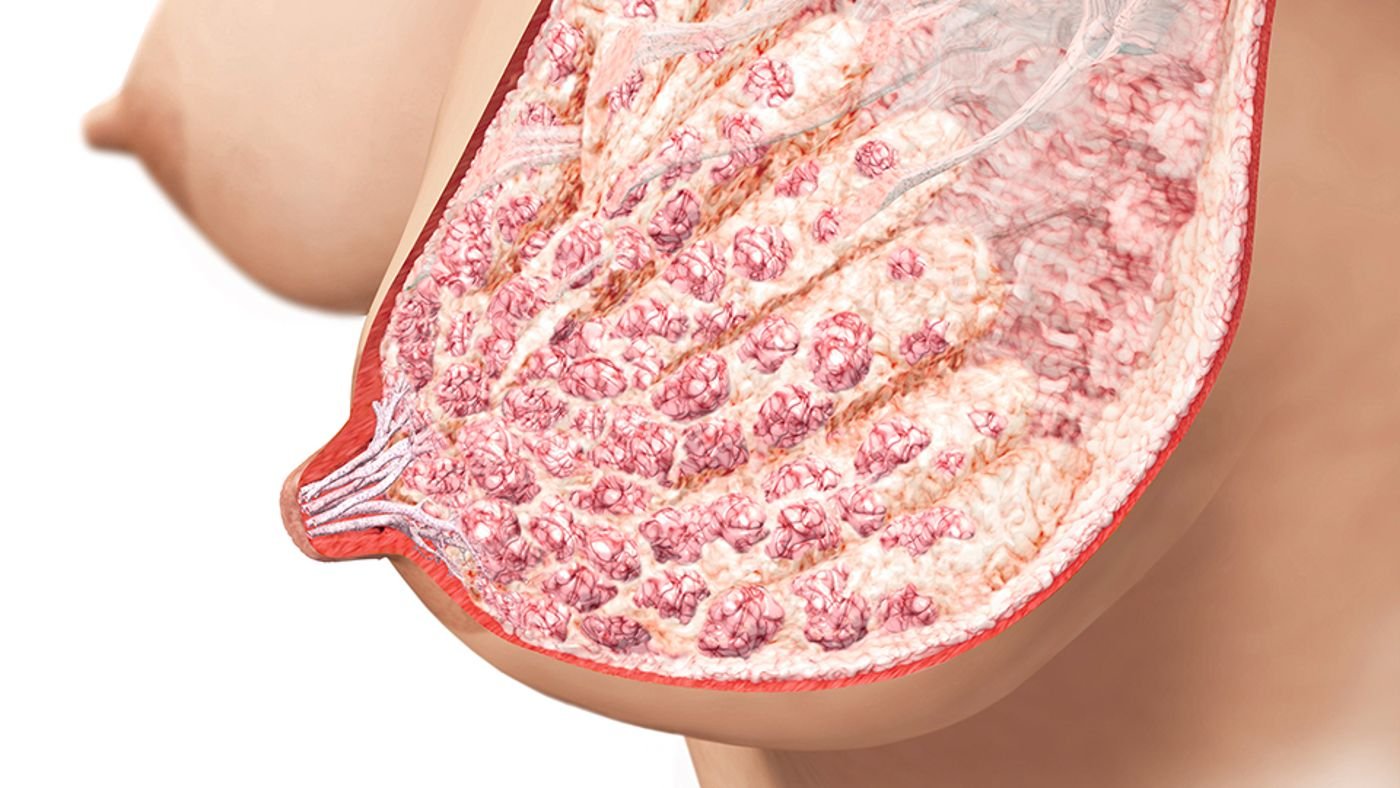
The Anatomy and Function of the Breast
During pregnancy and after birth, the baby's and mother’s bodies work together seamlessly in a beautiful symphony where both mother and child benefit. Understanding how your breast changes during pregnancy and lactation helps to fully appreciate how breastfeeding works.
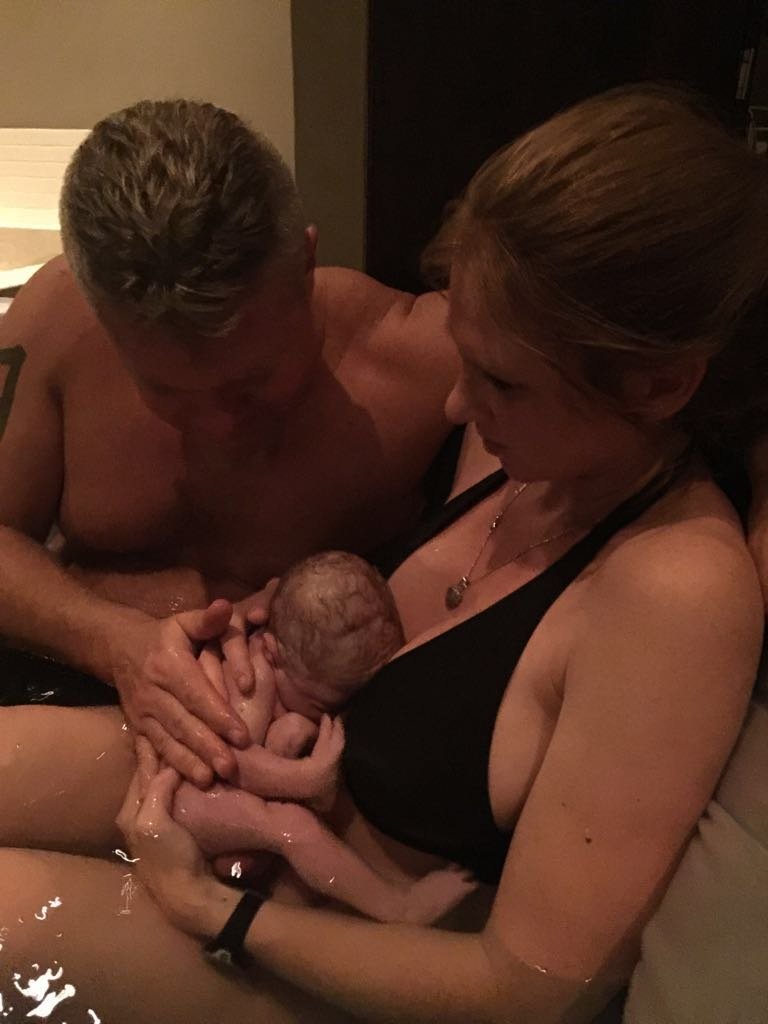
My Breastfeeding Journey: My Babies NEVER Slept!
While many would say I had an almost idyllic breastfeeding journey, those early years were some of the toughest of my life. My eldest son, Tor, was born in 2012, and when I was pregnant, I read everything I could get my hands on about the birthing process. I had an easy pregnancy and wonderfully event-free water birth.

Pumping While Driving
As a new mom with an infant to care for, you probably have realized how talented you are at multitasking. And this is before you even came close to the end of your maternity leave. Juggling all the extras like nappy changes, nursing, bathing, burping, rocking, soothing, and everything in between on top of your already full cup of daily tasks is no easy feat. When you throw in your work obligations, if you are a working mom, your time is minimal, and you have to optimize it to the best of your ability. This is why being able to express while driving becomes such a valuable skill.

Breastfeeding and Mental Health
If you've experienced anxiety or depression in the past, you may have learned coping skills and be better prepared for dealing with postpartum depression. Unfortunately, sometimes mothers who have never experienced anxiety or depression find themselves in the depths of postpartum depression when their babies arrive. It has been found that up to 80% of women experience "baby blues" postpartum.

My Breastfeeding Journey - Why I Became an IBCLC
Following a STAT Primary Cesarean Section, something that upset me greatly, I was DETERMINED that my breastfeeding journey would be a success. We made it 15 months with what I now believe was a posterior tongue tie, suck blister, excessive spit-up (due to a milk allergy we only discovered after weaning), mastitis SIX times, oversupply issues, and pumping while away from my baby during my 12-hour shifts.

Mom Rage is a Real Thing
Mom rage can't be a real thing, can it? Moms are all about love and cuddles, smiles and kisses, hugs, and happy things, right? A mother will move mountains for her children, shielding them with love and care. There is no feeling stronger than a mother's love. But moms are also human. And being a mother is considered one of the most demanding and challenging jobs there is. It’s no surprise that they may experience rage at times. Read on to learn about mom rage and how to deal with it.
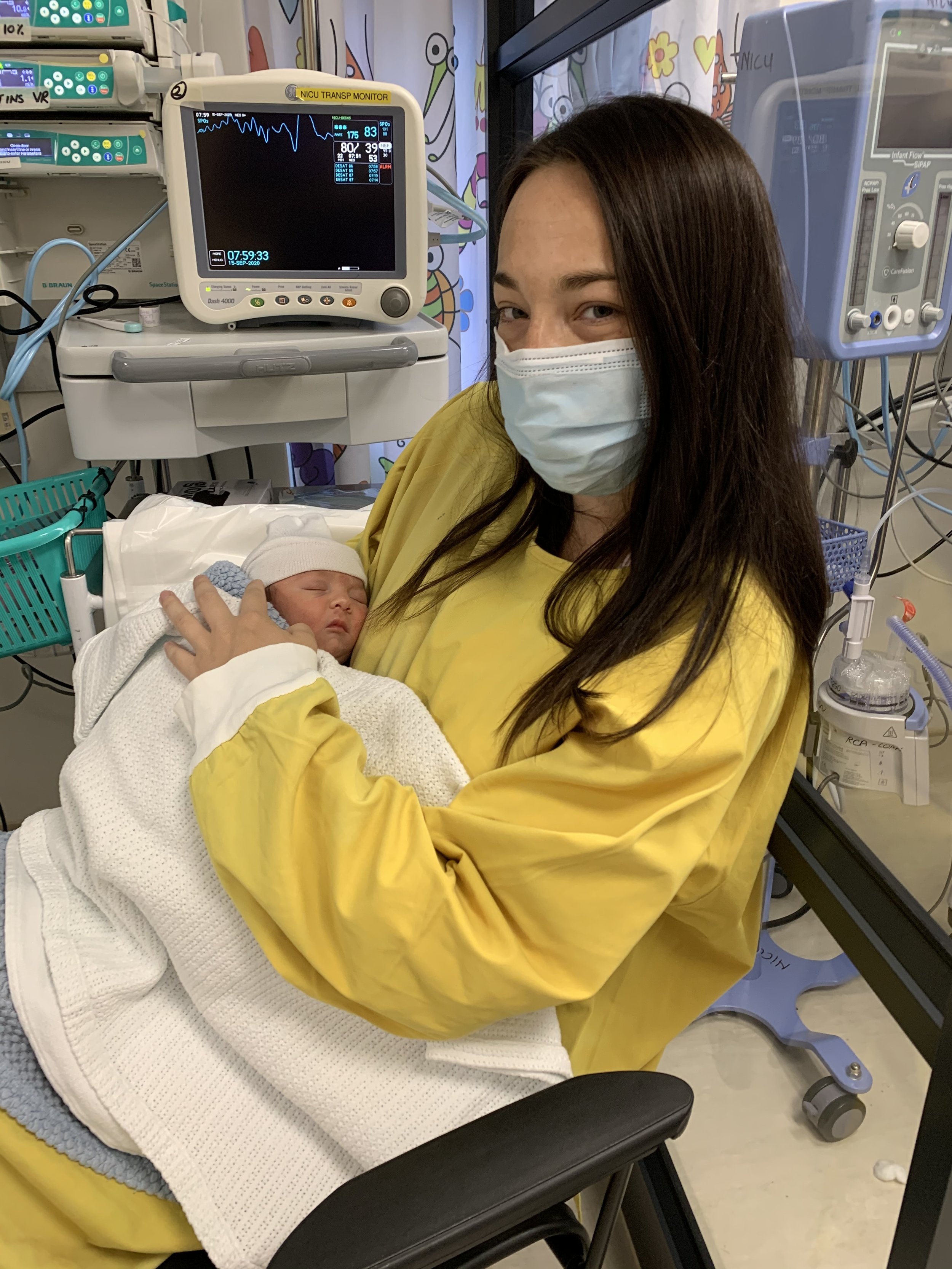
My Breastfeeding Journey in NICU During COVID
I promised myself that it would be different this time - that I would be calm and allow my baby to feed wherever and whenever he needed. I would avoid all that time and stress expressing and sterilizing bottles. However, our plans rarely go according to plan. Never did I imagine that the journey would be this difficult.

Plus-sized Breastfeeding
It's no secret that everyone's anatomy is different. Each breast, areola, and nipple have unique characteristics. Women labeled "plus-sized," or those with larger breasts, often have concerns about their ability to breastfeed their babies. Read on to learn more about breastfeeding your baby as a plus-size.

Carpal Tunnel Syndrome and Breastfeeding
Carpal tunnel syndrome (CTS) is a well-known condition caused by increased pressure on the median nerve in the wrist. The median nerve runs from the forearm through a passageway in the wrist (carpal tunnel) to the hand. It provides sensation to the palm side of the thumb and fingers, but not the little finger. The nerve is affected by the intense pressure from a build-up of swelling, which causes a loss in sensation in the fingers.

